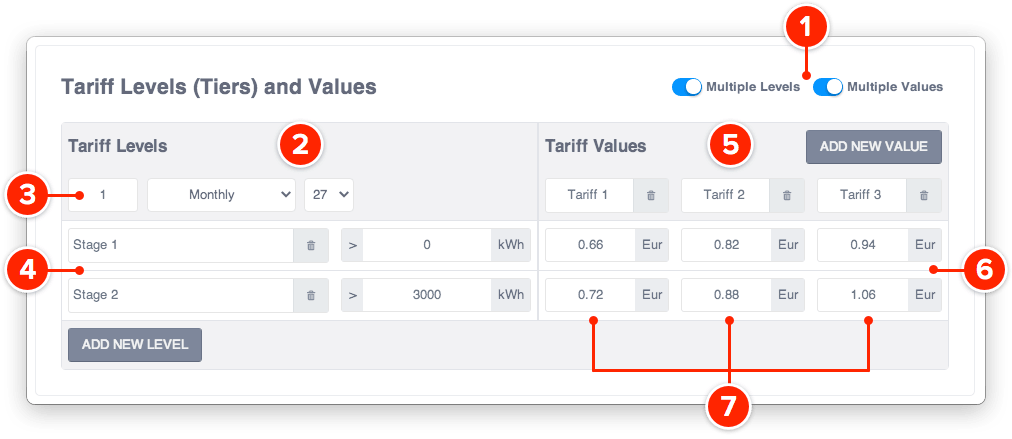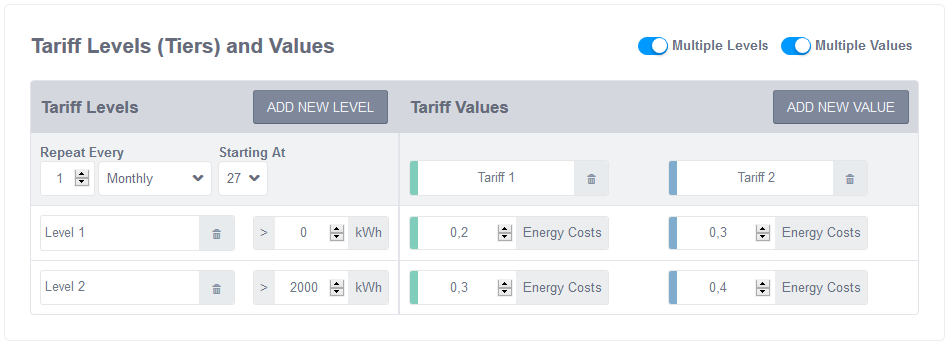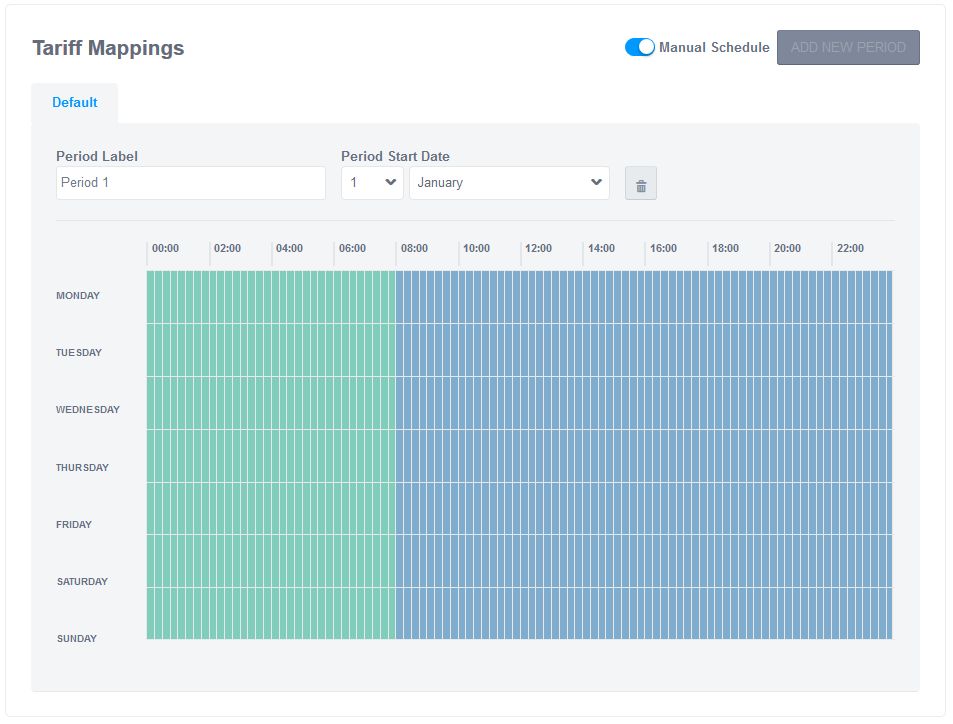Tariffs Section
Helping you and your business to have a full understanding and control hover energy spendings is one of the many features iDomlive provides. To achieve this, you need to maintain an updated pricelist for your utility providers. Those pricelists are what we call Tariffs, and can be managed in the Entity App.
Beyond costs information, Tariffs can also enable carbon footprint calculations.
Tariff Levels and Values:
A Tariff should directly translate the pricelist of your provider. Tariffs can be as simple as a single value, or have multiple values and levels depending on your contract.
Single and Multiple Values - If your cost varies along different times of the day, and/or weekdays, you need to activate the “Multiple Values” feature, specifying what will those values be. Once they’re declared, you can map those values to their schedule using the Tariff Mappings feature.
Multiple Levels - In some situations, your contract may stipulate that above predefined consumption stages the cost unit will also change. For those circunstances you’ll need to activate the “Multiple Levels” feature, setting the stages defined by your contract.
Adding to this, your contract may also stipulate different values for different times of the day and the day of the week when the consumption happens. While you only need to have one Value to have a Tariff, to achieve the scenario above you’ll need to activate the “Multiple Values” option.
The following illustrated figure shows a practical using both multiple Levels and Values:

1. Control whether your Tariff uses multiple Levels and/or Values
2. Tariff Levels column
3. Levels renew cycle - This defines the cycle for resetting your global consumption readings. You should make this coincide with your billing cycle. The example shows a case where every 1 Month, at day 27, the consumption counting goes back to zero, triggering the Stage 1 values again.
4. Set the name and value for each Level
5. Tariff Value column
6. Set the different Values
7. Values are effectively a two dimensional grid where rows associate costs with each Level and columns create new Values for association with different times of consumption. Note that association will be configured in the next step, here you are just declaring the values.
Tariff Mappings:
Once you’ve created the Tariff Levels and Values, you will then be able to assign values to different times of consumption. By default you’ll have one weekly schedule which assumes the values will stay the same all year.
If your Tariff changes in different times of the year, you’ll also need to create New Periods, where each Period has it’s own starting date and weekly schedule. Periods don’t have an ending date, each period will continue until the next period starts and the application will loop through your Mappings along the year.

Automated Tariff Mappings
The application is capable of automatically associate you consumptions with the correspondent tariff schedule (mapping). This is achieved by reading from a device which schedule to apply at any given moment. Please ask you service provider for more information about this feature.
Add a Tariff
Step 1
To add a new Tariff go to the Tariffs section in the Entity App.

Step 2
Press the “Add Tariff” button at the top.

Step 3
The next screen will ask you to name the new Tariff and set a few options:

Name - Sets the name to be associated with this Tariff.
Type - Defines whether will be calculating Price or CO2 values.
Label - Set the label to be shown when presenting calculated values (example: Eur for a Price type).
Unit - Every device is associated with a Reading Unit, therefore the mechanism well use to associated Tariffs and their compatible devices is by indexing both Unit.
Step 4
Add your tariff levels and Values. In this example we will use 2 levels and 2 values:

- Level 1 - It will represent consumption level from 0 KWh.
- Level 2 - It will represent consumption level from 2000 KWh.
- Value 1 - We will use this value to represent the price during the night.
- Value 2 - We will use this value to represent the price during the day.
Step 5
Now the user needs to add at least one period and manually define costs and schedules. In this example we will use the value 1 from 00:00 until 08:00 and value 2 from 08:00 until 00:00.

Edit a Tariff
To edit a Tariff open the Tariffs Section and choose the tariff from the list. Once in the details page, activate the editing mode by pressing one of the two Edit buttons.

